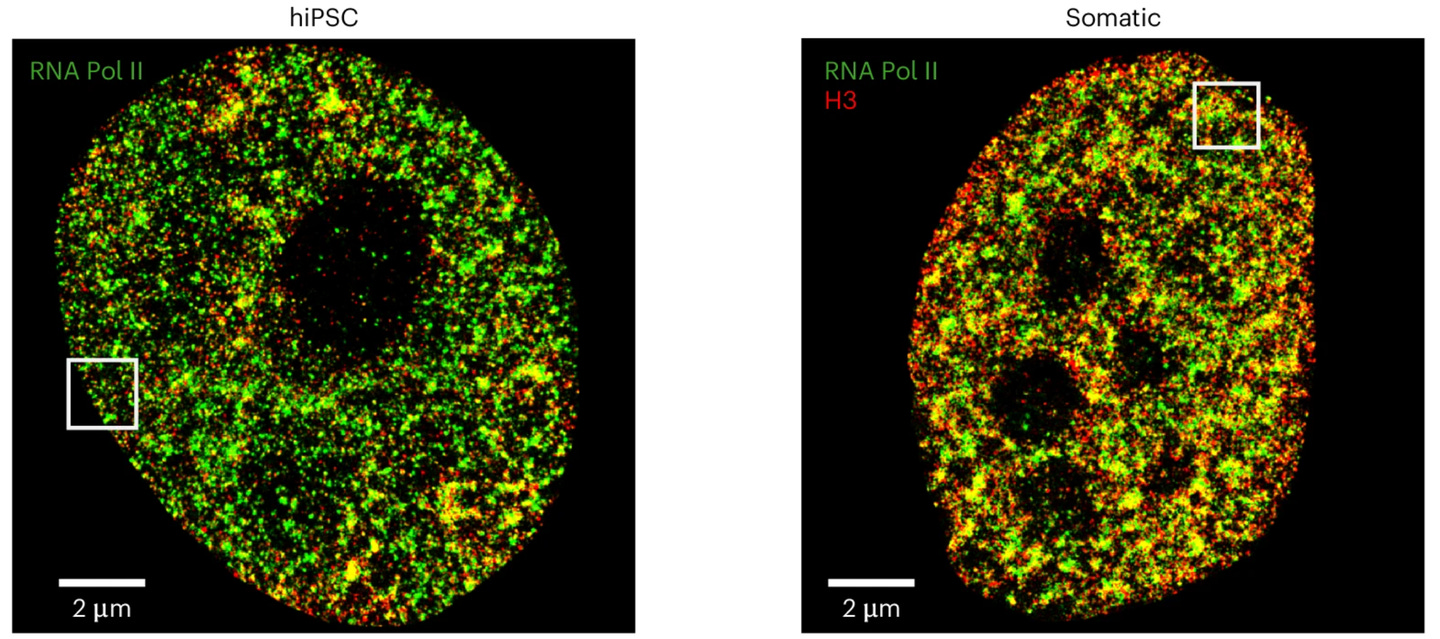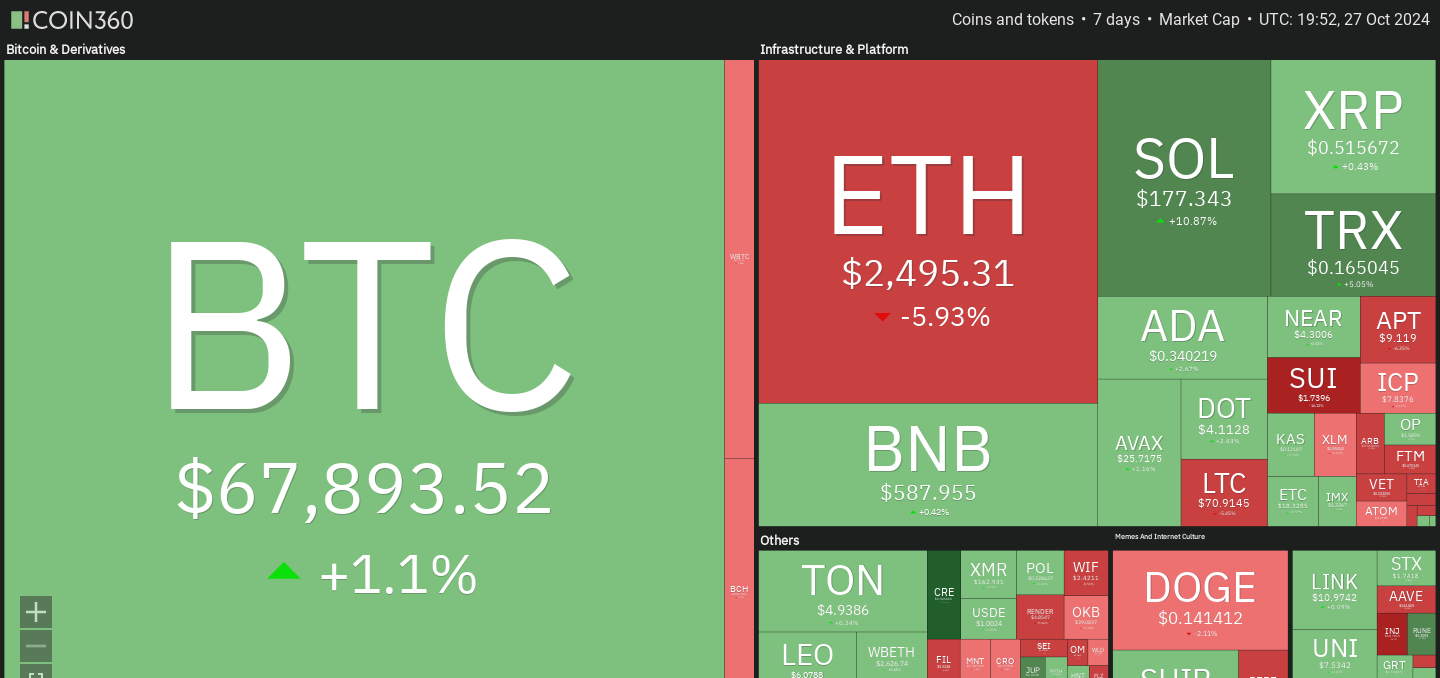📔 Weekly Journal: Who Will Own Your Digital Twin?
[6 min read] Your weekend guide to getting ahead on the digital frontier. Today, the usual market news & why user-controlled digital twins enable privacy, personalisation, and "open metaverse" success
Happy Long Weekend to all you Kiwi’s! Welcome to this week’s Weekly Journal 📔, your guide to the latest news & innovation in emerging technology, digital assets, and our exciting path to the Metaverse. This is week 99 of the 520 weeks of newsletters I have committed to, a decade of documenting our physical and digital lives converge.
New subscribers are encouraged to check out the history & purpose of this newsletter as well as the archive.
- Ryan
🌐 Digital Assets Market Update
To me, the Metaverse is the convergence of physical & virtual lives. As we work, play and socialise in virtual worlds, we need virtual currencies & assets. These have now reached mainstream finance as a defined asset class:
🔥🗺️ 7-day heatmap below, showing the current share of the market for the top cryptocurrencies, and their change in price over the last week. All-time high before Christmas?
🎭 Crypto Fear and Greed Index is based on volatility, social media sentiments, surveys, market momentum, and a few other bits and pieces.
🗞️ Interesting news from this week
🔮 This week on a podcast, Mark Zuckerberg stated he envisions the Metaverse unfolding in three stages, reflecting the evolution of computers and mobile phones. Initially embraced by gamers, virtual reality expands as social spaces draw everyday users. In a third phase, fitness platforms like Peloton demonstrate how VR bridges global connections through shared physical experiences. While Meta’s vision for a fully immersive Metaverse may take 15 years to develop, the integration of gaming, social media, and fitness apps is already bringing elements of this vision to life. Zuckerberg sees the Metaverse as a seamless blend of virtual and physical worlds, fostering global connectivity.
🗺 In this weeks episode of “Into the Metaverse”, Yemel Jardi, Co-founder of Decentraland and Executive Director of the Decentraland Foundation, shares his vision for a collaborative, user-controlled metaverse. He explores Decentraland's pioneering role in the open metaverse, where digital ownership, brand creativity, and interoperability unite to enhance the virtual experience. Yemel discusses the importance of self-custody for empowering users, brand partnerships that redefine engagement, and cross-platform asset compatibility that drives the future of digital ownership. His journey from blockchain developer to metaverse leader highlights the evolution of immersive, interconnected virtual worlds shaping the internet’s next frontier. Listen to it here:
🫱🏻🫲🏼 This week, Epic Games stated that they envision a metaverse where Fortnite, Minecraft, and Roblox can interoperate seamlessly, bringing a unified digital economy to players. With Unreal Engine 6 in development, Epic’s CEO Tim Sweeney outlined plans for a game-agnostic marketplace where digital assets are interoperable across games, enhancing player trust in long-term digital ownership. Epic's vision underscores the importance of open, interconnected ecosystems that transcend individual game “walled gardens.” By enabling federated flows between platforms, Epic aims to increase engagement and foster an open metaverse, a shift that would likely leverage blockchain for trustless verification and asset portability.
👓 Read of the Week
This weeks read is “Deciding who owns your ‘digital twin’ will make or break the metaverse”. The article makes a case that the success of the metaverse hinges on establishing secure, biometrically verified digital twins that protect user privacy. Italian researchers suggest that digital ownership and interoperability are essential, advocating for a metaverse where users control their data rather than corporations. By securely linking personal data to a digital twin, users could unlock personalised services in healthcare, finance, and beyond. Instead of corporations holding and profiting from this data—as with social media today—decentralized identity systems would allow users to store, access, and monetise their own data on their terms, incentivising active participation in the metaverse’s virtual worlds. Excellent read!
This weeks watch is from the story above, its just under an hour but great background listening, or just listen on your commute
🎥 Watch of the week
AI 🎨🤖🎵✍🏼
In the Metaverse, AI will be critical for creating intelligent virtual environments and avatars that can understand and respond to users with human-like cognition and natural interactions:
The AINU AI tool, developed by researchers from institutions including the Centre for Genomic Regulation, represents a breakthrough in early disease detection by identifying minuscule cellular changes, as small as 20 nanometres, invisible to traditional methods. Leveraging high-resolution STORM microscopy, AINU can distinguish cancer cells from normal cells and detect viral infections within an hour of onset. This AI-driven system analyses the cellular nucleus, recognising alterations in DNA organisation that signal disease. While current clinical application is limited by STORM’s specialised equipment, advancements could soon bring this powerful diagnostic tool into broader healthcare settings, enabling faster, more personalised treatments and accelerating stem cell research by reducing reliance on animal testing.
“Our method can detect cells infected by a virus very soon after the infection starts. Normally, it takes time for doctors to spot an infection because they rely on visible symptoms or larger changes in the body.
But with AINU, we can see tiny changes in the cell’s nucleus right away.”

That’s all for the free version this week! If you have any organisations in mind that could benefit from learning about emerging technology, be sure to reach out. Educational workshops are one of many consulting services I offer.
DCA With Me 🤑
Dollar Cost Averaging is an investment strategy in which an investor regularly invests a fixed amount of money into a particular asset/asset class at regular intervals, regardless of its current market cycle. By doing so, the investor can reduce the impact of market volatility and potentially earn a better return over time. Motto = time IN the market beats trying to time the market
To experiment with this, I invest $50 NZD into a Digital Asset every week. Each week I will choose an asset that seems underpriced in the short term and has positive long-term potential. My timeframe is 3-5 years. I don’t give financial advice but if you want to follow along with me you can use my easycrypto.co.nz referral link to support this newsletter. Let’s dive into this week’s pick:
Keep reading with a 7-day free trial
Subscribe to Metaverse Field Guide to keep reading this post and get 7 days of free access to the full post archives.




